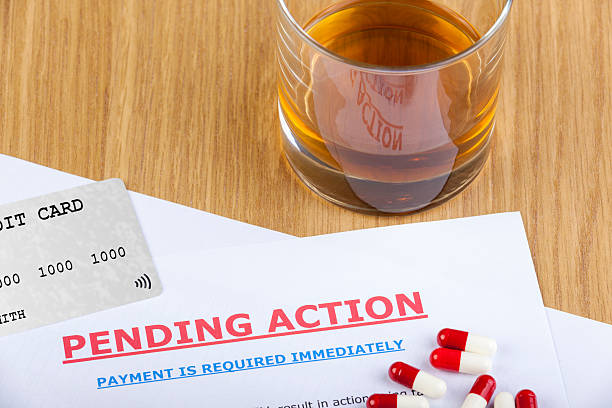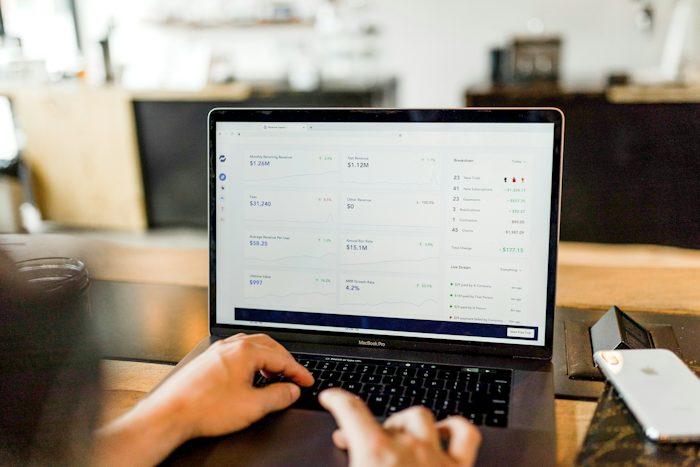Last updated Jan. 24, 2024 by Jessica Green
Receiving a bank deposit is one of the best feelings in the world. But this excitement can easily be cut short when you realize that the deposit is pending.
What is a pending deposit? If a deposit is pending can I use the money? Well, no! You cannot use the money until it is cleared and available on your bank balance.
If you have a lot of questions concerning pending deposits, this article provides you with answers. It explains pending deposits and covers how to cancel a pending transaction.

What Does It Mean If A Deposit Is Pending?
If you check your bank balance and see a pending deposit, it means that your bank acknowledges that a transfer of money was made to your account. However, this transfer is in process and under verification from your bank. Once it is verified as “valid” by your bank or a financial institution, it’ll be available to you for use.
Each time a deposit is made into your account, it goes through a process of verification. If the process of verification takes longer than it should, your bank will label it as a pending deposit – this is to make you aware that a deposit has been made to your account, but it is under verification.
Banks place a pending status on deposits in order not to lose money. Most people engage in fraudulent activities like fake transfers of money into your account. When this fake transfer is made, your bank will detect it and conduct extensive verification on it.
Oftentimes, a legitimate deposit may seem suspicious to your bank. So it will place a pending status on the deposit. Once the deposit is deemed valid, it’ll become available for use.
Can I Spend Money If It’s Pending?
Can I withdraw money from a pending deposit? Is it okay to spend money if it’s pending?
If you’re asking any of the above questions, the answer is No! If your bank issues a pending notice on a deposit made into your account, you cannot withdraw or spend the money however hard you try.
The deposit only shows in your account to notify you that it is under verification. This money cannot be accessed until it is verified as valid by your bank.
When a deposit is made into your account, your bank has to make sure that everything is fine with the deposit. The process of doing this can be instantaneous or can take a few minutes. However, if your bank notices any errors or suspicious activity with a deposit, they’ll undertake extra security. While taking extra measures, a pending status will be placed on the deposit to alert you of the situation.
Thus, if a deposit is pending, you cannot use the money until it is cleared and made available in your bank balance.
Another Interesting Article: How to Cancel a Pending Transaction on a Credit Card, Debit Card, and PayPal
Can I Use My Available Balance If I Still Have Money Pending?
Yes! If you have an available balance, you can make use of it while waiting for the pending deposit to be made available.
Having a pending deposit does not restrict you from using the available balance in your account. An available balance is the amount of money that you can withdraw. It does not include pending deposits.
An available balance is different from a current balance. An available balance includes the amount of money that has been authorized by your bank for use. However, a current balance includes your available balance, pending deposits, and debts that have yet to be deducted from your account.
Why Are My Current Balance And Available Balance Different?
Most times, the amount on your current and available balance may be different. There’s a reason for this.
A current balance shows the amount that is available for use and amounts that have not been fully processed. For example, if you make a purchase with your debit card but the transaction has not been processed, your current balance will show this amount until the transaction is processed. This is why your current balance may be higher than your available balance.

How Long Does It Take For A Deposit to Go From Pending to Available?
How long it takes for a pending deposit to clear depends on the type of deposit, the amount of money deposited, and your bank clearing policies.
On average, it takes one to two business days for a deposit to go from pending to available. Most financial institutions take a few hours, while some banks can take up to ten days to clear your pending deposit.
So if you have a pending deposit problem, it is best to notify your bank and find out how long it’ll take them to resolve the problem.
Do not freak out if it takes a longer period for the issue to be resolved. Larger amounts take longer periods. Simply notify your bank and stay calm.
Can a Bank Release A Pending Deposit Early?
Yes! A bank can release a pending deposit early. But it all depends on your bank, the deposit method used, and the amount of money.
If you discover a pending deposit on your account during business hours, it can be resolved within a few hours. However, if it is a large sum of money, it’ll take longer hours to be resolved.
Most banks have a closing hour of 5 pm. So in the case where you discover a pending deposit after 5 pm, you’ll have to wait till the next day for the pending transaction to be made available or declined.
Similarly, if the deposit was made on a Friday after 5 pm, you’ll have to wait till Monday for the problem to be resolved. So it could take days.
How Can I Speed Up A Pending Deposit?
If a pending deposit status on your account is making you restless, you can simply speed up the resolution process in the following ways.
- Call The Bank
If you notice a pending deposit, you can resolve the issue immediately by calling your bank customer service number to notify them of the problem. You can also make a personal visit to the bank if it’s nearby.
Giving early attention to the problem will get it resolved within a few hours.
2. Find Out The Reason For The Pending Deposit
A pending deposit may occur due to verification issues, incorrect bank account information, bank processing time, or account issues. Finding out which of the problems you have can help you speed up the resolution process.
Contact your bank to provide the correct information, or request the correct information from the depositor.
To avoid experiencing pending deposits, make electronic transfers or deposits in person.

Do Pending Deposits Show In Available Balance?
No! Your pending balance does not show in the available balance until it passes the verification process. Once the deposit is verified, it’ll be available to you for use.
A pending deposit can only show on your current balance. When this happens, your current balance will be higher than your available. Wait for a few hours or days for the problem to be resolved.
When a pending deposit occurs, two things could happen. It is either the money is considered valid and deposited into your available balance, or it is reversed or flagged as fraudulent.
Another Interesting Article: Banks vs. Credit Unions: What’s the Difference?
How Can I Know If My Deposit Is Pending?
Banks do not send out notifications of a pending deposit. Most times, you’ll get to find out about it on your own.
To know if your deposit is pending, log into your bank app or any online banking service offered by your bank.
Bank apps come with different layouts and home pages. Most bank apps have a field that shows “pending deposits”. If your bank does not have the “pending deposit” section. Find sections like “available balance” or “current balance”.
If you understand your bank’s app layout, navigate to the “available balance” section. If a deposit you’re expecting isn’t reflected in the “available balance” section, there’s a high chance you have a pending deposit.
Contact your bank’s customer service to get a good understanding of your bank’s app layout.
How Can I Know When My Deposit Is Ready?
If you have a pending deposit, you can know when it is ready by manually checking your available balance. Most banks will send an SMS message to notify you that the deposit is no longer pending.
If you have your bank’s app notification turned on, you’ll receive an alert that shows that the pending deposit has been cleared. Most bank apps do not have this feature, while some apps require your permission to send out notifications. So turn on the app’s notification button to receive updates and alerts.
You can also contact your bank’s customer service support to know if the deposit has been cleared.
Can A Pending Deposit Get Declined?
Yes! Your bank can decline a pending deposit if the deposit does not pass the verification process.
There are various reasons why pending deposits get declined. Some of them are:
- Insufficient Funds: During the verification process, your bank will contact the payor’s bank to find out if they have sufficient funds to send out to you. If the payor has an insufficient fund (i.e. they don’t have enough to send out to you) your bank will decline the deposit.
- Incorrect Bank Details
- Suspicious or Fraudulent Deposit
- If the payor cancels the deposit immediately.
Can A Bank Cancel A Pending Transaction?
Yes! A bank can cancel a pending transaction if the request is made by the merchant.
A pending transaction is different from a pending deposit. A pending deposit is a deposit that has not been cleared or verified. However, a pending transaction can include a pending deposit, charges, and payments.
A pending transaction occurs when money from a transaction is still moving between accounts.
To cancel a pending transaction, contact the merchant you made a transaction with, and request for them to reverse the charge or cancel the sales.
Most banks allow you to cancel a pending transaction via their app or online service. If you suspect fraud in a pending transaction, contact your bank immediately.
Why Is My Pending Transaction Not Showing Up?
If you made a payment or transaction with your debit card, but the pending transaction isn’t showing up, it could be that the retailer or merchant hasn’t processed or finalized the payment.
It takes one to twenty-eight days for a payment to be finalized. But oftentimes, the merchant will finalise it within three days.
To know when a payment has been finalized, log into your bank app and view your transaction history.
Can A Bank Reverse A Payment After It Has Posted?
Yes! In most cases, a bank can reverse a payment after it has been posted. A posted payment is a transaction that has been cleared or processed. This transaction will be reflected on your account statement.
A bank can reverse a posted payment through the following methods:
- Authorization method
- Refund
- Chargeback
If you experience a payment reversal, it could be that the retailer made a mistake or the item you intend to purchase is no longer in stock.

Why Did My Pending Deposit Disappear?
If the pending deposit status has disappeared from your account, it could be due to a few reasons.
When the sender cancels the deposit, your bank will erase the pending deposit status. Another reason could be that the sender has insufficient funds, or there was a mistake with bank details.
Additionally, if the pending transaction does not pass the verification process, it will be declined and thus removed from your account.
To be on the safe side, contact your bank immediately if the pending deposit on your account disappears.
How Long Does It Take To Cancel A Bank Transaction?
If a merchant begins to cancel or process your transaction, it could take three to seven days for it to be finalized. In a few cases, it could take as long as ten business days to cancel a bank transaction.
What Does Pending Payment Mean?
A pending payment is a recent card payment that is yet to be processed by the retailer or merchant.
When you make a payment for an online transaction or with a debit card, it goes through a kind of authorization process to prove that your card is valid with sufficient funds. However a merchant may be slow to process the transaction, hence the reason for a pending payment.
Final Thoughts
Every bank has a customer service support team. So if you have a question or an issue, contact your bank immediately. No matter how dumb you think your question is, the support team will always be ready to provide answers.


